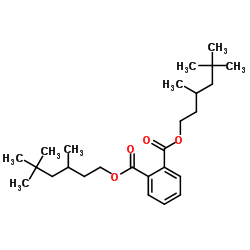Occupational exposure to diisononyl phthalate (DiNP) in polyvinyl chloride processing operations.
Kayoko M Fukasawa, Junzo Hirose, Toshiyuki Hata, Yukio Ono
文献索引:Int. Arch. Occup. Environ. Health 85(3) , 317-25, (2012)
全文:HTML全文
摘要
Diisononyl phthalate (DiNP) is primarily used as a plasticizer in polyvinyl chloride (PVC) materials. While information is available on general population exposure to DiNP, occupational exposure data are lacking. We present DiNP metabolite urinary concentrations in PVC processing workers, estimate DiNP daily intake for these workers, and compare worker estimates to other populations.We assessed DiNP exposure in participants from two companies that manufactured PVC materials, a PVC film manufacturer (n = 25) and a PVC custom compounder (n = 12). A mid-shift and end-shift urine sample was collected from each participant and analyzed for the DiNP metabolite mono(carboxy-isooctyl) phthalate (MCiOP). Mixed models were used to assess the effect on MCiOP concentrations of a worker being assigned to (1) a task using DiNP and (2) a shift where DiNP was used. A simple pharmacokinetic model was used to estimate DiNP daily intake from the MCiOP concentrations.Creatinine-adjusted MCiOP urinary concentrations ranged from 0.42-80 μg/g in PVC film and from 1.11-13.4 μg/g in PVC compounding. PVC film participants who worked on a task using DiNP (n = 7) had the highest MCiOP geometric mean (GM) end-shift concentration (25.2 μg/g), followed by participants who worked on a shift where DiNP was used (n = 11) (17.7 μg/g) as compared to participants with no task (2.92 μg/g) or shift (2.08 μg/g) exposure to DiNP. The GM end-shift MCiOP concentration in PVC compounding participants (4.80 μg/g) was comparable to PVC film participants with no task or shift exposure to DiNP. Because no PVC compounding participants were assigned to tasks using DINP on the day sampled, DiNP exposure in this company may be underestimated. The highest DiNP intake estimate was 26 μg/kg/day.Occupational exposure to DiNP associated with PVC film manufacturing tasks were substantially higher (sixfold to tenfold) than adult general population exposures; however, all daily intake estimates were less than 25% of current United States or European acceptable or tolerable daily intake estimates. Further characterization of DiNP occupational exposures in other industries is recommended.
相关化合物
| 结构式 | 名称/CAS号 | 分子式 | 全部文献 |
|---|---|---|---|
 |
邻苯二甲酸二异壬酯
CAS:28553-12-0 |
C26H42O4 |
|
Analysis of phthalates in milk and milk products by liquid c...
2014-10-03 [J. Chromatogr. A. 1362 , 110-8, (2014)] |
|
Monitoring and removal of residual phthalate esters and phar...
2014-07-30 [J. Hazard. Mater. 277 , 53-61, (2014)] |
|
Effects of 4-nonylphenol and/or diisononylphthalate on THP-1...
2012-01-01 [Int. J. Immunopathol. Pharmacol. 25(2) , 365-76, (2012)] |
|
Consumer product in vitro digestion model: Bioaccessibility ...
2006-03-01 [Regul Toxicol Pharmacol 44(2) , 161-71, (2006)] |
|
Determination of phthalate esters in vegetable oils using di...
2015-08-05 [Anal. Chim. Acta 887 , 237-44, (2015)] |